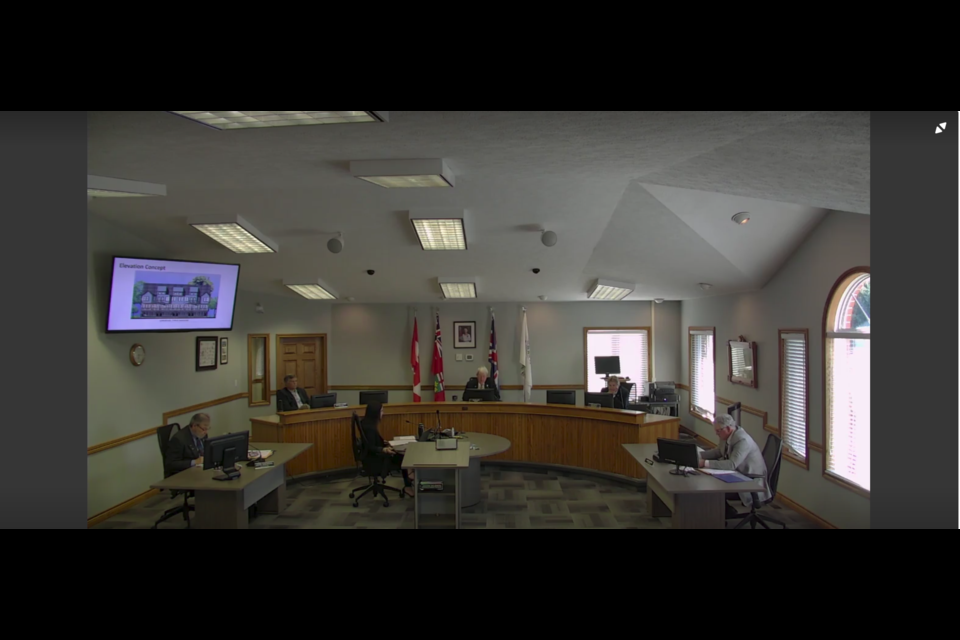ERIN – Erin residents relayed their concerns about a proposed townhouse development, with a majority calling it too dense for the small town.
The town held a public meeting on Tuesday regarding the Kensington Square development.
The developer is proposing 70 stacked townhouse units on Main Street in Erin at the site of the former Erin Public School.
Points raised by residents included parking, pedestrian traffic during school hours, trees being removed and it not fitting in with the look of the village.
One resident, Evan Sepa who lives down the street from the proposed development, took an analytical approach in comparing the density of this project to other townhouse developments in Guelph and Wellington County.
“I am a data analyst by trade, so an analytical approach is a natural step for me to qualify what was originally just an opinion,” Sepa said by email.
Sepa put together a website based on data from Guelph’s Open Data site and the Wellington County Social Housing. His findings showed a 70-unit development on land just over a hectare in size would have a higher density of units than any other social townhousing development in Guelph or Wellington County.
The website states that he compared this to social townhousing because the assumption is they are more modest in size and cost compared to freehold townhouses and generally a higher density.
Sepa stressed he’s not against developing the site and suggests going for a more average density that will allow for more green space.
“I believe that the proposed development has an unreasonably high density which will leave less than 25 per cent of the lot for small insignificant patches of grass and no large trees,” Sepa said by email.
“I would push for the density to be no greater than the average social townhousing development in Guelph/Wellington which is 36-units per hectare.”
Development consultant John Cox said at the meeting they were concerned with the connotation being put on density and the comparison to social housing.
“I’ve seen Mr. Sepa’s list and it is projects that are several years old and were basically done under a different regime and done as public housing,” Cox said, adding that stacked townhouses is a new type of development that is essentially a crossover between apartments and townhouses.
“It achieves a higher density than what you see in conventional townhouses and projects you would have seen 20 or 30 years ago because of the policy pressure that’s being exerted on increasing our densities.”
Sepa disagrees and said he thinks his analysis is fair. In his view, talk of intensification and growth is still true if the development goes with less units.
“The density of units per hectare hasn’t changed since those developments were created and the relative size of existing developments is completely appropriate to reference when planning for new ones,” Sepa said.
Sepa ultimately said council should make decisions on this development based on facts and not just opinions offered.
“Everyone has their bias and opinions when it comes to important decisions such as this,” Sepa said. “I hope that council can rely on data-driven decision making and not just the many opinions offered.”

